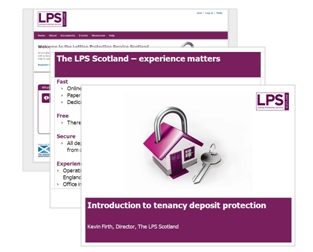Cultivating a good relationship with your tenants from the start is one of the key foundations underpinning a great tenancy. Happy tenants are more likely to stay at the property, reducing vacant periods and the costs associated with finding new tenants, making your investment more profitable.
The best deposit disputes are the ones that don’t happen! A great landlord-tenant relationship can also help you avoid the time-consuming frustration of dispute resolution. Landlords who maintain good communication and rapport with their tenants are much more likely to find their tenants will agree to fair deposit claims at the end of the tenancy, and avoid deposit disputes.
What underpins a successful tenancy?
We’ve applied what we’ve learned in our years of protecting tenancy deposits and resolving disputes to create a blueprint for constructing a solid tenancy. Follow these four pillars to build a great landlord-tenant relationship.
1. Advise
Sharing clear helpful information with your tenants can help avoid issues and minimise the impact of problems that arise.
› Highlight key terms and obligations in their contract so their responsibilities for maintaining the property throughout the tenancy are clear.
› Advise them to get in touch ASAP in the event of any problems and make sure they know who to contact and how.
› Make sure you give them the Prescribed Information, and provide them with a copy of the inventory that you agreed with them at the check-in.
› Give them a copy of our guide for tenants to help pre-empt any questions they may have about their tenancy deposit.
2. Record
Keeping detailed records of the tenancy gives you and your tenants the evidence to help you agree on how the deposit should be repaid at the end of the tenancy.
› Complete the check-in report and inventory in the company of the tenant if possible. Together you can note the condition of all furnishings, fixtures, décor and the property itself. Be consistent and descriptive when recording each room and the condition and age of contents, and be sure to mention if an item is brand new. Take date stamped photos and video.
› Mid-term inspections are an opportunity to check the current state of the property, both against the inventory and for repairs due to natural wear and tear. If you identify any changes, make sure you record them.
› Unexpected event such as damage to the property or a broken item? Keep a record of any communication, including emails, texts and letters. Share a written or email summary of the situation and resolution with the tenant, and keep copies of all related bills, invoices and other documents.
3. Collaborate
Landlords and tenants working together are more likely to have a harmonious relationship, which can ease into a smooth end to the tenancy when the time comes.
› Invite tenants to the check-in and check-out to discuss and agree on any discrepancies.
› Discuss repairs or improvements with your tenants at the mid-tenancy review and ask if there are any issues. They live in the flat day-to-day and can help ensure your property is well maintained, and your investment is protected.
› When living in a property, normal wear and tear is expected. Work together at the end of the tenancy to determine what is reasonable and acceptable to all for any claims.
› If you have a change of one or more tenants during the tenancy, review and update the original check-in report with the tenants. Those staying in the property and tenants transferring in won’t want to be responsible for any claims arising from the outgoing tenants actions.
4. Hear
All the best relationships are based on great communication, just ask any marriage guidance counsellor. But communication isn’t just talking, it requires listening skills too.
› Listen to any concerns your tenant raises, hearing what they have to say, and acknowledging their point of view. Dialogue requires two people talking and listening, and you may hear something that’s to your benefit.
› Answer any concerns in a reasoned and fair way that shows you’ve listened to what they’ve told you, even if you disagree with their position. A reasoned response is more likely to be accepted than casual dismissal.
We hope our four pillars can help you build an open and honest relationship with your tenant, which in turn should mean no surprises and a smooth end to the tenancy.
Download our simple infographic for a handy reminder of the four pillars of a successful tenancy.









